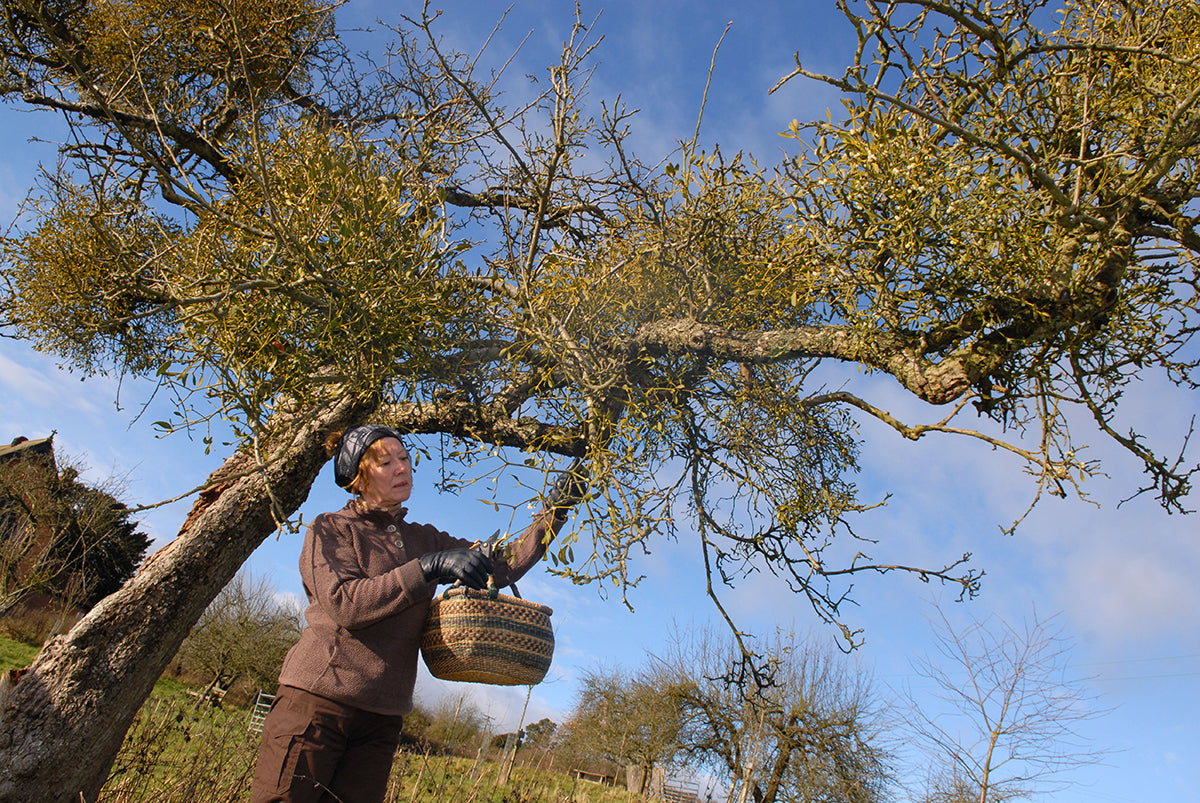Plant folklore - mistletoe

Mistletoe's Christmas association and traditions can be found in both ancient mythology and relatively modern customs. The familiar custom of kissing beneath mistletoe, while often assumed to be ancient, only emerged in the 18th century and became widespread during the 19th century when Christmas traditions were starting to flourish. The kissing tradition required the removal of one berry after each kiss, effectively limiting the number of kisses per sprig. A practice largely forgotten in the 21st century.
Far more ancient is mistletoe's role in Norse mythology, particularly in the tale of Baldr the Beautiful, a Germanic god, son of Odin. According to legend, Baldr's mother Frigg secured oaths from every earthly thing never to harm her son. However, she overlooked mistletoe, which the mischievous god Loki exploited by crafting a magical spear from it. Loki then manipulated Baldr's blind brother Hod into unwittingly striking a fatal blow with the weapon. In her grief, Frigg's tears became mistletoe's white berries, and she transformed the plant into a symbol of peace and friendship.
Mistletoe's reputation as a fertility aid extended across European cultures. In Italian tradition, women would carry mistletoe sprigs believing it would enhance their chances of conception.
A fascinating agricultural fertility ritual combined mistletoe with hawthorn in a symbolic burning ceremony. Farmers would create bundles from these two plants and set fire to them, then proceed to carry the flaming bundle across their newly-sown fields. The ritual required the farmer to pass over precisely twelve ridges with the burning bundle, and superstition held that the crops' success in the coming year hinged on maintaining the flame throughout the ceremony. If the fire extinguished before completing the twelve ridges, it was considered an omen of poor harvests ahead.
In Classical mythology, mistletoe appears as the ‘Golden Bough’ that guided Aeneas to the underworld in Virgil's Aeneid. This magical plant provided safe passage through the realm of the dead, establishing mistletoe as a protective talisman to be hung over doorways in Roman culture.
Druidic connections to mistletoe, come from Pliny the Elder and Julius Caesar. Their accounts describe elaborate harvesting rituals where druids cut mistletoe from sacred oaks using golden sickles, catching it before it touched the ground to preserve its powers. Modern druid groups maintain this reverence for mistletoe, particularly celebrating it in places like Tenbury Wells, where a mistletoe festival is held every December.







